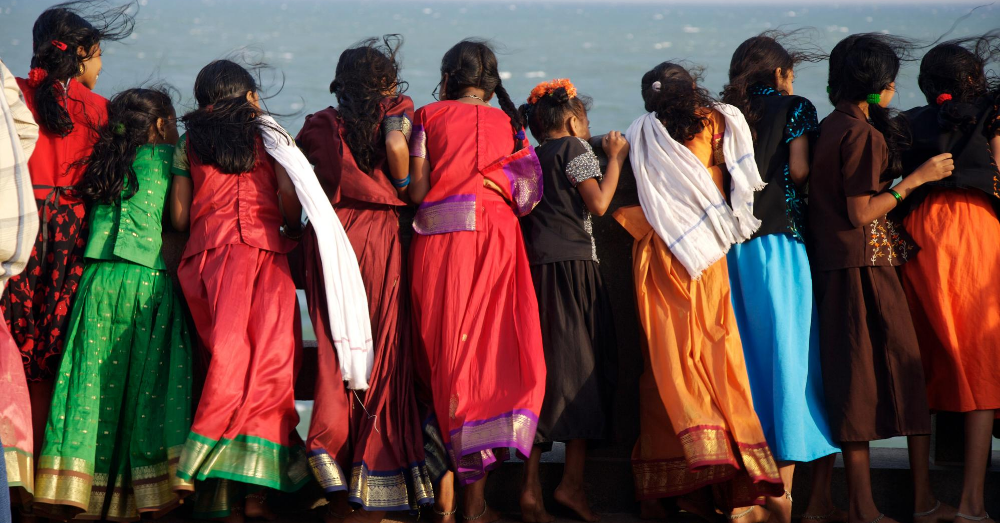Do you remember your first period? How aware were you of it?
The first period usually invites a whirlpool of emotions and a rollercoaster of bodily changes. At the tender teen ages, with no assurance of proper comprehensive sexuality education, there is only so much that the mind can fathom. While it still remains a hush-hush affair in most households, some communities have grand celebrations to mark the onset of periods and an apparent “stepping into womanhood”.
How Celebrations Of Onset Of Menstruation Came About
That a girl fits in the frame of the primary social standing gifted to her by society, that of a child-bearer seems to be a matter of celebration. Functions like these were also important for the family’s social and economic standing as it helped in building alliances. It was like an announcement of their daughter’s fertility- a requisite for marriage. Another side to the coin can be that these traditional practices are not always oppressive and can in fact create a safe space for girls to experience the changes in her body. A community space can also make her feel good or provide much needed emotional support. Let’s leave that for you to decide.
The bedrock of most celebrations is fancy lunches, gifts like sarees and jewellery for the girl, ceremonial bath, etc. followed by isolation of the girl. Some of the most famous coming-of-age rituals are-
Tuloni biya- Prevalent in Assam, it is a symbolic wedding that takes place after the girl gets her first period and marks her attainment of womanhood.
Ritushuddhi- A South Indian ritual that marks the first menses of a girl with gifts and sarees.
Manjal Neerattu Vizha- Starts with the ritualistic seclusion, and ends with the turmeric bath along with gifts and sarees.
Upon research, I found that while the above mentioned famous ones make it to the editorial columns, India is home to a plethora of other such rituals. Let’s explore some of them.
The Diverse Rituals Across India
Bengal- A fusion of elements from Vaishnava Hindus and Sufi Muslims forms the Bauls. These wandering mystical cults live on spreading Baul music. But a Baul’s life is also about worshipping bodily fluids, including menstrual blood. A Baul woman named Tara recollects that when she got her first period, “a ceremony took place in which her menstrual blood was mixed with cow’s milk, coconut milk, camphor, palm juice, and sugar, and drunk by those present as a potent regenerating substance, increasing memory, concentration, happiness, serenity, and love.”

Kerala- A Hindu upper caste, Nairs have a 4-5 day ceremony called Thirandukalyanam. The community equates the puberty of a girl to the home-coming of Bhagvati and therefore it is a matter of celebration. When the menarche is first reported, the girl is given a coconut oil massage head to toe and is then cleansed with Vaka flowers. A number of rituals take place in between which finally concludes on the 5th or 6th day when a priest comes to the house, conducts a purification ritual, and gives an ornament of coconut leaves to the girl.
Andhra Pradesh and Telangana- This region celebrates Peddamanishi Pandaga during the onset of periods. Vijaylakshmi TG shares “This is celebrated on the 1st, 5th and the last day of periods. On the first day, we have ‘mangal snan’. The girl is bathed by five women excluding the mother. The girl is kept in a separate room during this period and she is disallowed from roaming around. Through the days the functions last, she is given separate utensils, a mattress. She is fed nutritious food. On the last day of the function, she applies sandalwood paste. Gifts like saree, jewellery, and other utilities are gifted by the girl’s uncle.”
Karnataka- The traditional inhabitants of the coastal districts of Karnataka are the Bunts. On the 5th day of the first menses, the passage of a girl to womanhood is celebrated. This is called Kara Pattavine and has only female participants. Water is poured on the girl and post the bath, she is dressed in Zari sarees and jewels. This precedes the ceremonial cooking of rice by the girl in a Kara (rice pot). Women then give gifts to the girl along with their blessings. It is also customary to not stay in the same house for the night where the ceremony had taken place.
While we witnessed diversity in the ways of celebration, what remains common is the ritualistic seclusion of girls not only on menarche but for the subsequent cycles all her life. We celebrate womanhood, but never their right.
The author is a part of the current batch of the #PeriodParGyan Writer’s Training Program.
